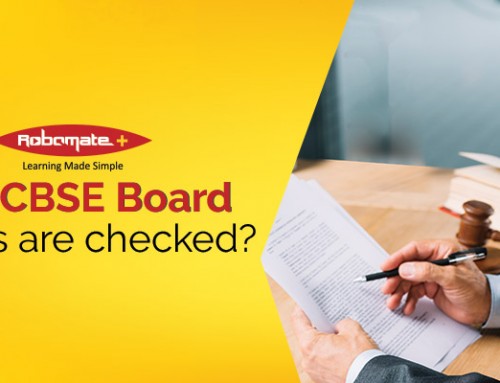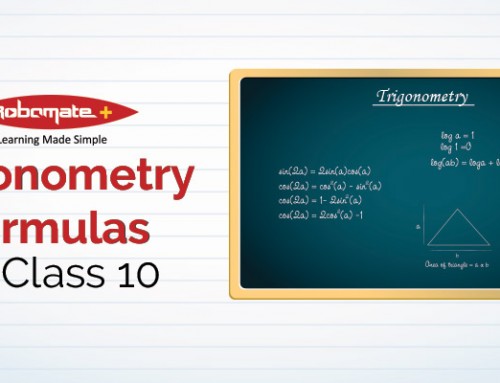Chapter-1 : Real Numbers
QUESTION-1
Use Euclid’s division algorithm to find the HCF of:
i)135 and 225
ii)196 and 38220
iii)867 and 225
Solution:
i) We start with the larger number i.e 225
By Euclid’s division algorithm,we have
225=1×135+90
135=1×90+45
90=2×45+0
Hence, HCF(225,135)=HCF(135,90)=HCF(90,45)=45
Therefore,the HCF of 135 and 225 is 45
ii) We start with the larger number i.e 38220
By Euclid’s division algorithm,we have
38220=196×195+0
196=196×1+0
Hence , HCF(196,38220)=196
Therefore,the HCF of 196 and 38220 is 196
iii) We start with the larger number i.e 867
By Euclid’s division algorithm,we have
867=225×3+102
225=102×2+51
102=51×2+0
Hence, HCF(867,225)=HCF(225,102)=HCF(102,51)=51
Therefore,the HCF of 867 and 225 is 51
Question 2:
Show that any positive odd integer is of the form 6q+1,6q+3 & 6q+5
where q is some integer.
Solution :
Using Euclid’s division algorithm,we have
x=bq+r {0≤r<b}…..(1)
Substituting b=6in equation(1)
So, x=6q+r,where r=0,1,2,3,4,5
If r=0, x=6q+0(divisible by 2)…..even
r=1, x=6q+1(not divisible by 2)…..odd
r=2, x=6q+2(divisible by 2)…..even
r=3, x=6q+3(not divisible by 2)…..odd
r=4, x=6q+4(divisible by 2)…..even
r=5, x=6q+5(not divisible by 2)…..odd
Therefore,the number 6q,6q+1,6q+2,6q+3,6q+4,6q+5are either even or odd.Hence ,any positive odd integer is of the form 6q+1,6q+3 & 6q+5Where q is some integer.
Question 3:
An army contingent of 616 members is to march behind an army band of 32 members in a parade. The two groups are to march in the same number of columns. What is the maximum number of columns in which they can march?
Solution :
The maximum number of columns would be the HCF of (616,32)
We can find the HCF of 616 and 32 by using Euclid Division Algorithm.
Therefore,
616=19×32+8
32=4×8+0
8=8×1+0
So , HCF of 6161 and 32 is 8
Hence ,the maximum number of columns in which they can march is 8.
Question 4:
Use Euclid’s Division lemma to show that the square of any positive integer is either of the form 3m, 3m+1 for some integer m.
Solution :
According to Euclid Algorithm ,
We have x=bq+r …..(1)
Substituting , b=3
We get,x=3q+r (where,0≤r<3
i.e r=0,1,2 )
When ,r=0 ,x=3q…….(A)
r=1 ,x=3q+1…(B)
r=2 ,x=3q+2…(C)
So, Squaring eqn(A),(B) and (C)
We get,
From eqn (A),
x2=9q2 x2=3×3q2
x2=3×m (where,m=3q2)
From eqn (B),
x2=(3q+1)2
=9q2+1+6q
=9q2+6q+1
=3(3q2+2q)+1
=3m+1 (where,m=3q2+2q)
From eqn (C),
x2=(3q+2)2
=9q2+4+12q
=9q2+12q+3+1
=3(3q2+4q+1)+1
=3m+1 (where,m=3q2+4q+1)
Hence, any positive integer is either of the form 3m,3m+1 for some integer m.
EXERCISE 1.2
Question 6:
Express each number as a product of its prime factors:
i)140
ii)156
iii)3825
iv)5005
v)7429
Solution :
i) 140
Take LCM of 140 i.e 2×2×5×7×1
Hence, 140=2×2×5×7×1
ii) 156
Take LCM of 156 i.e 2×2×13×3×1
Hence, 156=2×2×13×3×1
iii)3825
Take LCM of 3825 i.e 3×3×5×5×17×1
Hence, 3825=3×3×5×5×17×1
iv)5005
Take LCM of 5005 i.e 5×7×11×13×1
Hence, 5005=5×7×11×13×1
v)7429
Take LCM of 7429 i.e 17×19×23×1
Hence, 7429=17×19×23×1
Question 7:
Find the LCM and HCF of the following pairs of integer and verify that LCM×HCF=Product of the two numbers.
i) 26 and 91
ii) 510 and 92
iii) 336 and 54
Solution :
i) 26 and 91
26=2×13×1(expressing as product of it’s prime factors)
91=7×13×1(expressing as product of it’s prime factors)
So, LCM(26,91)=2×7×13×1=182
HCF(26,91)=13×1=13
Verification:
LCM×HCF=13×182=2366
Product of 26 and 91 =2366
Therefore,LCM×HCF=Product of the two numbers .
i) 510 and 92
510=2×3×17×5×1(expressing as product of it’s prime factors)
92=2×2×23×1(expressing as product of it’s prime factors)
So,
LCM(510,92)=2×2×3×5×17×23=23,460
HCF(510,92)=2
Verification:
LCM×HCF=23,460×2=46,920
Product of 510 and 92 =46,920
Therefore,LCM×HCF=Product of the two numbers .
iii) 336 and 54
336=2×2×2×2×7×3×1(expressing as product of it’s prime factors)
54=2×3×3×3×1(expressing as product of it’s prime factors)
So,
LCM(336,54)=24×33×7=3024
HCF(336,54)=2×3=6
Verification:
LCM×HCF=3024×6=18,144
Product of 336 and 54=18,144
Therefore,LCM×HCF=Product of the two numbers .
Question 8:
Find the LCM and HCF of the following integers by applying the prime factorization method.
i) 12,15 and 21
ii) 17,23 and 29
iii) 8,9 and 25
Solution :
i) 12,15 and 21
12=2×2×3
15=5×3
21=7×3
From the above ,HCF(12,15,21)=3and LCM(12,15,21)=420
ii)17,23,and 29
17=17×1
23=23×1
29=29×1
From the above ,HCF(17,23,29)=1and LCM(17,23,29)=11339
iii)8,9 and 25
8=2×2×2
9=3×3
25=5×5
From the above ,HCF(8,9,25)=1and LCM(8,9,25)=1800
Question 9:
Given that HCF(306,657)=9 .Find LCM(306,657)?
Solution :
We know,
HCF×LCM=Product of two numbers
i.e 9×LCM=306×657
LCM=306×6579=22338
Question 10:
Check whether 6n can end with the digit 0 for any natural number n.
Solution :
If the number 6n ends with the digit zero,then it is divisible by 5.Therefore the prime factorization of 6n contains the prime 5.This is not possible because the only prime in the factorization of 6n is 2 and 3 and the uniqueness of the fundamental theorem of arithmetic guarantees that these are no other prime in the factorization of 6n
Hence, it is very clear that there is no value of n in natural number for which 6n ends with the digit zero.
Question 11:
Explain why 7×11×13+13 and 7×6×5×4×3×2×1+5 are composite number.
Solution :
We have,
7×11×13+13
=13(7×11×1+1)
=13×78
=13×3×2×13
Hence, it is a composite number .
We have, 7×6×5×4×3×2×1+5
=5(7×6×4×3×2×1+1)
=5(1008+1)
=5×1009
Hence, it is a composite number .
Question 12:
There is a circular path around a sports field.Sonia takes 18 minutes to drive one round of the field, while Ravi takes 12 minutes for the same. Suppose they both start at the same point and at the same time and go in the same direction, after how many minutes will they meet again at the starting point?
Solution :
Since, Both Sonia and Ravi move in the same direction and at the same time, the method to find the time when they will be meeting again at the starting point is LCM(18,12) is 2×3×3×2×1=36
Therefore, Sonia and Ravi will meet again after 36 minutes.
EXERCISE 1.3
Question 13:
Prove that 3–√ is irrational .
Solution :
Let us assume ,that 3–√ is rational
i.e 3–√=xy (where,x and y are co-primes)
y3–√=x
Squaring both sides
We get,(y3–√)2=x2
3y2=x2……..(1)
x2 is divisible by 3
So, x is also divisible by 3
therefore we can write x=3k (for some values of k)
Substituting ,x=3k in eqn 1
3y2=(3k)2 y2=3k2
y2 is divisible by 3 it means y is divisible by 3
therefore x and y are co-primes.
Since ,our assumption about 3–√ is rational is incorrect .
Hence, 3–√ is irrational number.
Question 14:
Prove that 3+23–√ is irrational .
Solution :
Let us assume that 3+23–√ is rational .
So, x= 3+23–√
x2=(3+23–√)2 x2=21+123–√
3–√=x2−2112…….(1)
because x is a rational number
So, the expression x2−2112is also a rational number.This is a contradiction .Hence, 3+23–√ is irrational .
Question 15:
Prove that the following are irrational numbers.
i)13√
ii)73–√
iii)6+5–√
Solution :
i)13√
13√=3√3√3√
⇒ 13√=3√3
⇒ 13√=13×3–√
Let, a=13√=13×3–√ be a rational number .
⇒ 3a=3–√
3a is a rational number .Since product of any two rational numbers is a rational number which will imply that 3√ is a rational number .But,it contradicts since 3√ is a irrational number .
therefore 3ais a irrational or ais irrational.
Hence, 13√ is irrational .
ii)73–√
Let, a=73–√ be a rational number .
⇒a7=3–√
a7 is a rational number .Since product of two rational number is a rational number. Which will imply that 7√
is a rational number .But,it contradicts since7√ is a irrational number .
thereforea7is a irrational or ais irrational.
Hence,73–√ is irrational .
iii)6+5–√
Let, a=6+5–√ be a rational number .
Squaring , a2=(6+3–√)2
a2=36+23–√+3
a2=39+23–√
3–√=a2−3912……………..(1)
Since, ais a rational number
So, the expression a2−3912 is also rational number.
⇒3–√ is a rational number .
This is a contradiction.
Hence, 6+5–√ is irrational.
EXERCISE 1.4
Question 16:
Without actually performing the long division, state whether the following rational numbers have a terminating decimal expansion or a non-terminating repeating decimal expansion.
i)233125
ii)2732
iii)3235
iv)51600
v)2949
vi)2724×53
vii)2922×56×73
viii)315
ix)3550
x)77210
Solution :
Note; If the denominator has only factors of 2 and 5 then it has terminating decimal expansion.
If the denominator has factors other than 2 and 5 then it has a non-terminating decimal expansion.
i)233125=2352
Since, the denominator has only 5 as its factor, it has a terminating decimal expansion.
ii)2732=2725
Since, the denominator has only 2 as its factor, it has a terminating decimal expansion.
iii)3235=323×7
Since, the denominator has factors other than 2 and 5, it has a non-terminating decimal expansion.
iv)51600=526×52
=126×51
Since the denominator has only 2 and 5 as its factors, it has a terminating decimal expansion.
v)2949=2972
Since, the denominator has factors other than 2 and 5, it has a non-terminating decimal expansion.
vi)2724×53
Since the denominator has only 2 and 5 as its factors, it has a terminating decimal expansion.
vii)2922×56×73
Since, the denominator has factors other than 2 and 5, it has a non-terminating decimal expansion.
viii)315=15
Since, the denominator has only 5 as its factor, it has a terminating decimal expansion.
ix)3550=7×521×52
=721×51
Since the denominator has only 2 and 5 as its factors, it has a terminating decimal expansion.
x)77210=7×1121×51×3×7
=1121×51×3
Since, the denominator has factors other than 2 and 5, it has a non-terminating decimal expansion.
Question 17:
Write down the decimal expansion of the following rational numbers.
i)233125
ii)2732
iii)3235
iv)51600
v)2949
vi)2724×53
vii)2922×56×73
viii)315
ix)3550
x)77210
Solution;
i)233125=0.00736
ii)2732=.84375
iii)3235=.91428….
iv)51600=.00312
v)2949=.59183…
vi)2724×53=.0135
vii)2922×56×73=.00001…
viii)315=.2
ix)3550=.7
x)77210=.36¯
Question 18:
Decide whether the real numbers are rational or not. If they are rational ,then write its pq form.What can you say about the prime factors of q?
i)24.1352436789
ii).12346783940564543……
iii)41.2¯
Solution;
i)24.1352436789
Since it has a terminating decimal expansion, it is a rational number and q has factors of 2 and 5 only.
ii).12346783940564543……
Since, it has non-terminating and non- repeating decimal expansion, it is an irrational number.
iii)41.2¯
Since, it has non-terminating but repeating decimal expansion, it is a rational number and q has factors other than 2 and 5 .
SUMMARY ;
REAL NUMBER-Numbers that have a finite or infinite sequence of digits when it is represented in decimal form.
It is denoted by “R”
REAL NUMBERS ARE DIVIDED INTO 2 TYPES
RATIONAL NUMBERS- Number which can be represented in pq form.
It is divided into 2 types;
- TERMINATING DECIMAL NUMBER: The terminating decimal number has a finite number of Eg;0.432,653.8523,etc
- NON-TERMINATING RECURRING DECIMAL NUMBER: In a decimal, if a digit or a sequence of digits keeps repeating itself infinitely, then it is known as a non-terminating repeating decimal or recurring decimals.
Note;
It is expressed by putting a bar over the repeating digits.
eg;454.32¯,0.2¯,etc
IRRATIONAL NUMBERS- Number which can’t be represented in pq form.
- NON- RECURRING DECIMAL NUMBER: It has infinite numbers and has the property that no sequence of digits are repeated.
eg-34.0428356393….,0.68384937…, etc.
HENCE, We can conclude that for every real number there corresponds a unique point on the number line and conversely, to every point on the number line there corresponds a real number.












